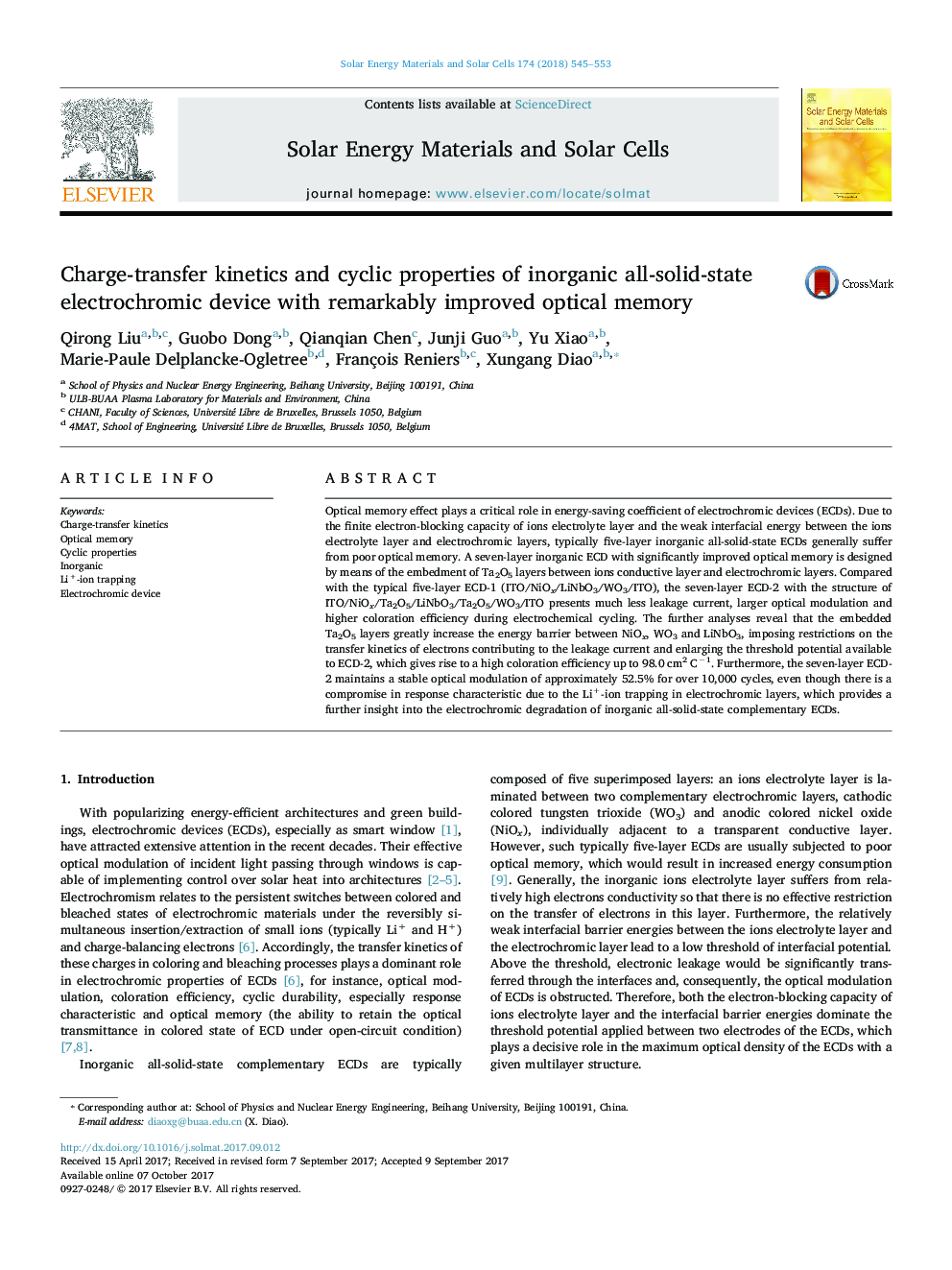| Article ID | Journal | Published Year | Pages | File Type |
|---|---|---|---|---|
| 6456746 | Solar Energy Materials and Solar Cells | 2018 | 9 Pages |
â¢A seven-layer inorganic ECD is designed and prepared.â¢Optical memory of inorganic ECD is greatly improved by embedding two Ta2O5 layers.â¢Incorporation of Ta2O5 layers effectively reduces leakage current of inorganic ECD.â¢Degradation of ECDs mainly results from Li+ trapping in electrochromic layers.â¢Degrading response property of ECD relates to Li+ trapping/detrapping processes.
Optical memory effect plays a critical role in energy-saving coefficient of electrochromic devices (ECDs). Due to the finite electron-blocking capacity of ions electrolyte layer and the weak interfacial energy between the ions electrolyte layer and electrochromic layers, typically five-layer inorganic all-solid-state ECDs generally suffer from poor optical memory. A seven-layer inorganic ECD with significantly improved optical memory is designed by means of the embedment of Ta2O5 layers between ions conductive layer and electrochromic layers. Compared with the typical five-layer ECD-1 (ITO/NiOx/LiNbO3/WO3/ITO), the seven-layer ECD-2 with the structure of ITO/NiOx/Ta2O5/LiNbO3/Ta2O5/WO3/ITO presents much less leakage current, larger optical modulation and higher coloration efficiency during electrochemical cycling. The further analyses reveal that the embedded Ta2O5 layers greatly increase the energy barrier between NiOx, WO3 and LiNbO3, imposing restrictions on the transfer kinetics of electrons contributing to the leakage current and enlarging the threshold potential available to ECD-2, which gives rise to a high coloration efficiency up to 98.0Â cm2Â Câ1. Furthermore, the seven-layer ECD-2 maintains a stable optical modulation of approximately 52.5% for over 10,000 cycles, even though there is a compromise in response characteristic due to the Li+-ion trapping in electrochromic layers, which provides a further insight into the electrochromic degradation of inorganic all-solid-state complementary ECDs.
